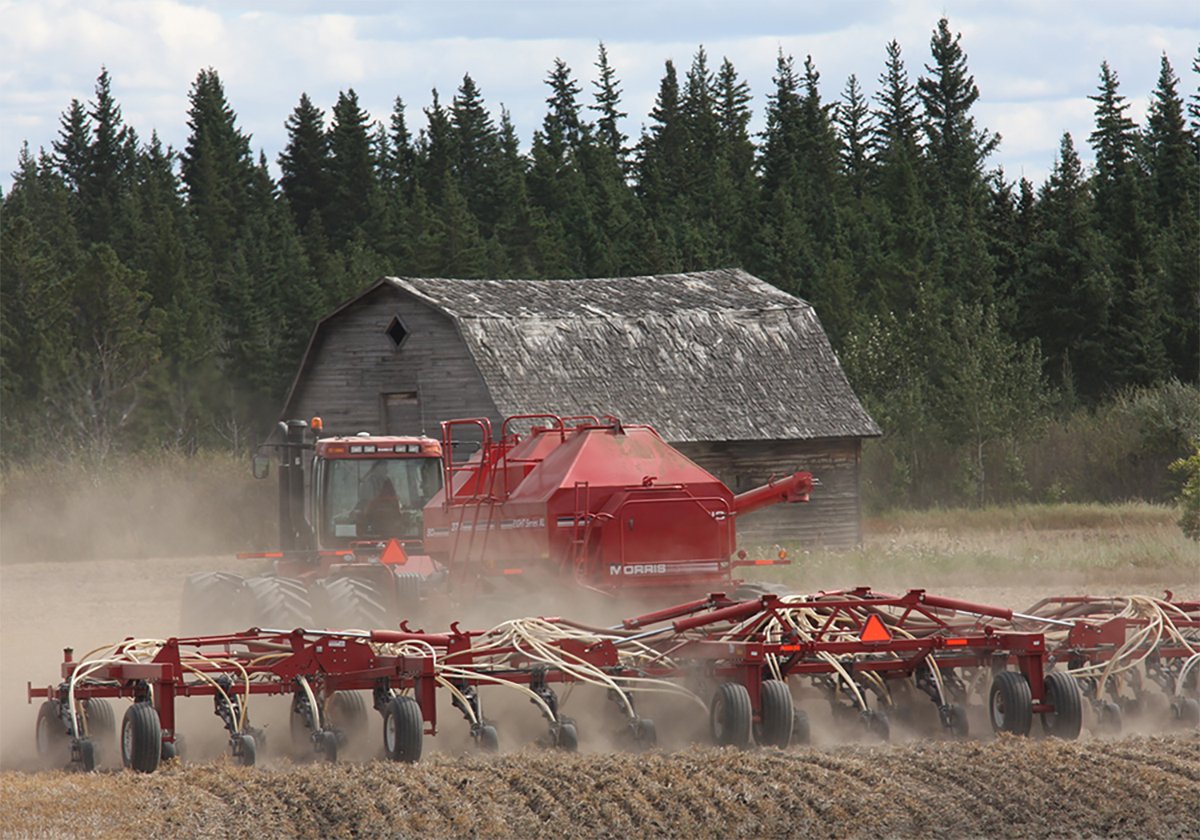Raising 90,000 chickens at one time is not an easy task.
But at least chickens don’t have to be milked, said Diane Pastoor, a former dairy farmer who switched to poultry production when she, husband Mark and their four children moved to Saskatchewan in 2003.
“B.C. is pretty crowded,” she said of the move. “We thought we’d try something different.”
They also thought they would stick with a supply-managed sector.
So they moved to a site just east of Dalmeny, northwest of Saskatoon, and set up shop in three barns that hold 30,000 birds each.
Read Also

Seeding conditions look good for U.S. winter wheat crop
SASKATOON — Seeding conditions are near ideal in the hard red winter wheat growing region of the United States, says…
The Pastoors found producing poultry is less work than their dairy but the threat of avian flu and strict biosecurity protocols keep them on their toes.
“It’s a whole new thing being (a producer) in 2006,” Pastoor said. “We have to be proactive.”
Producers must make sure they have adequate manure storage, rodent control and proper disposal of dead birds. They have special coveralls and boots to wear in each barn, and they fill out a logbook each time they go in and out, noting the reason why they were there.
Pastoor said they are vigilant about making sure the birds have food and water at all times, that the barns are properly cleaned and disinfected each time the birds go out to the processor and that the barns aren’t crowded.
The birds have free run of the barn but do not go outside, so they do not come in contact with wild or migrating birds that might carry disease.
“My husband is in the barns probably four times a day making sure the food lines are running, the water is running and that the grain trucks are coming,” she said.
He picks up dead birds, culls, weighs to make sure the birds are growing properly and does daily paperwork.
The barns are turned six times a year and each time a flock leaves, the manure has to be pushed out, the barns power washed and disinfected and the feed pens cleaned in preparation for the next flock.
The Pastoors get their chicks from the Prairie Pride hatchery at Grandora, Sask., and market their finished birds to Prairie Pride Natural Foods in Saskatoon.
With just two commercial processors in the province, Pastoor said larger producers have to deal with one of them. The other is Lilydale in Wynyard.
Gone are the days when poultry producers hired local people to catch the birds, cage them and put them on trucks, she said.
Professional crews, hired by the processor in consultation with the producer, follow Canadian Food Inspection Agency guidelines for picking up and transporting the birds.
Pastoor said producers also have to deal with consumers’ misconceptions. For example, there is a common belief that there are growth hormones in chicken feed, she said, but they have been outlawed since the 1960s.
“The feed quality has just been increasingly better,” she said, resulting in faster growth rates.
Pastoor, who sits on the Chicken Farmers of Saskatchewan board, said there is a cost to keeping up with biosecurity measures but it is key to maintaining relationships with processors and supplying the best quality food.
Producers also have to buy quota, which she said isn’t cheap. Every eight weeks, provincial marketing boards consult with processors and set the minimum price per kilogram that processors will pay producers.
They use market conditions, input costs, prices in other provinces and other factors to determine the price.
“We get paid as supply and demand goes,” Pastoor said.
“We’re the only commodity groups that don’t get subsidized by the government.”
Sweet and Sour Maple Chicken Wings
2 lb. (1 kg) CHICKEN WINGS or DRUMS/DRUMETTES
1 cup (250 mL) FLOUR
1 tsp. (5 mL) SALT
1 tsp. (5 mL) PEPPER
2 EGGS
3 tbsp. (45 mL) WATER
1/4 cup (60 mL) SUNFLOWER OIL
Maple Sweet and Sour Sauce:
1/2 cup (125 mL) VINEGAR
2/3 cup (150 mL) MAPLE SYRUP
1/3 cup (75 mL) SOY SAUCE
1 ONION, finely chopped
Separate the chicken wings at the joints. Discard the tips. Mix the flour, salt and pepper in a bowl. In a separate bowl, mix the eggs and water. Dip the chicken wings into the egg mixture, then into the flour mixture. Heat the oil in a skillet and brown the chicken wings.
Place the wings in a 9 x 13 inch (22 x 33 cm) baking dish. Combine the vinegar, maple syrup, soy sauce and onion and pour over the chicken wings. Cover with a lid or aluminum foil. Bake at 350 F (180C) for one hour. Serves: Four (or one teenager.)
Source: Maple Moon, A Maple Syrup Cookbook by Maple Moon Publishing, 2001.















